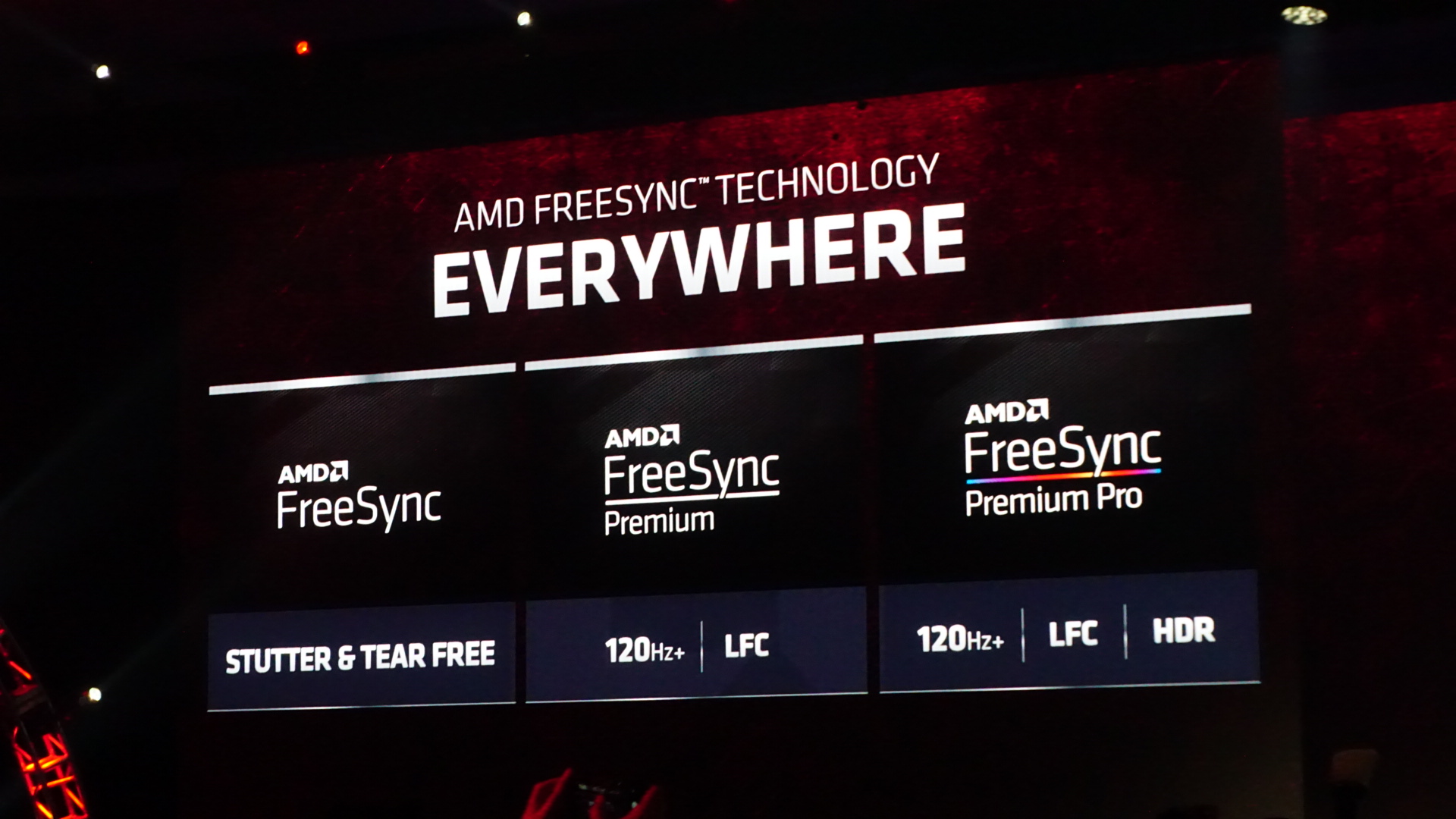AMD has decided to rebrand its adaptive framerate technology at CES 2020, in order to make it easier for consumers to know exactly what their monitors are capable of doing.
Previously, gamers were given FreeSync and FreeSync 2, both systems designed to deliver images that are free of tearing, giving low flicker and low latency. FreeSync was actually released back in 2015, so was a rather older standard than FreeSync 2, which was also capable of HDR.
However, AMD has decided to rebrand and reclassify the FreeSync tiers, as well as introduce a new one into the mix.
The bottom line is that FreeSync is still FreeSync. Nothing has changed there, whereas now, AMD has brought in FreeSync Premium and FreeSync Premium Pro. FreeSync Premium is a brand new standard that has come in to enhance the base FreeSync with additional benefits. Each FreeSync Premium monitor or display needs to have at least:
- 120 Hz Refresh rate at minimum FHD resolution
- Low framerate compensation (LFC)
What LFC does is to help ensure that when the framerate of a game is running at less than the minimum supported refresh rate of a monitor, then the frames will be displayed multiple times in order to remain in the supported refresh rate of the monitor, allowing for smooth gameplay.
FreeSync Premium Pro is the new FreeSync 2 HDR. This one delivers high-performance gaming with HDR capabilities and more. According to AMD’s official community site, these are now their industry standards:
FreeSync
- Tear free
- Low flicker
- Low latency
FreeSync Premium
- At least 120 Hz at FHD resolution
- Low framerate compensation
- Tear free
- Low flicker
- Low latency
FreeSync Premium Pro
- HDR capabilities and game support
- At least 120 Hz at FHD resolution
- Low framerate compensation (LFC)
- Tear free
- Low flicker
- Low latency in SDR and HDR








